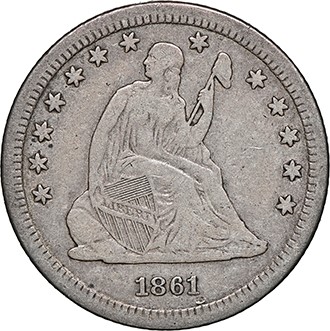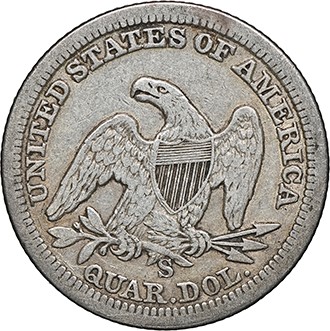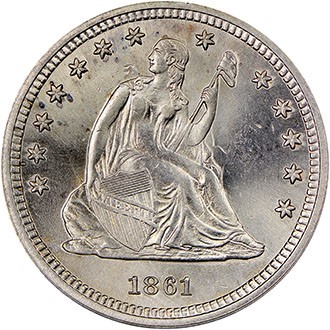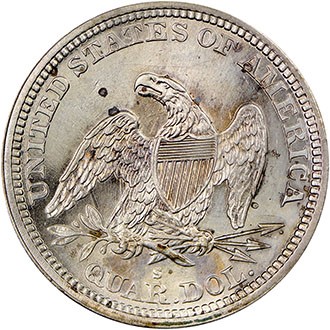Counterfeit Detection: 1861 Seated Liberty Quarter
Posted on 5/1/2023
In 1855 the relatively new San Francisco Mint began striking quarters. At first, annual mintages were typically only a fraction of what was produced at the Philadelphia Mint. For instance, the 1861-S has a mintage of just 96,000, which is less than 2 percent of 4,853,600 quarters struck in Philadelphia that same year. As you would expect, early San Francisco quarters carry a substantial premium when compared to Philadelphia issues of the same date.
Numismatic Guaranty Company® (NGC®) has certified several dozen of these rare 1861-S quarters, but none of them in Mint State. This reflects their strong demand and heavy circulation in the West in the 1860s. About Uncirculated examples can sell for thousands or even tens of thousands of dollars, compared to just a couple hundred dollars for a similarly graded 1861 Philadelphia issue.
NGC recently encountered a purported example of an 1861-S quarter. When a mintmark means a substantial difference in the price of a coin, collectors need to carefully examine this area for signs of alteration. Counterfeiters will sometimes add a mintmark to a far-less-valuable Philadelphia example in an attempt to pass it off as a rarer issue.
In the case of this coin, the mintmark area (below the eagle's tail on the reverse) looks especially suspect. Additionally, the mintmark itself is far too small. Genuine examples have a large "S" that crowds the space under the eagle's tail.
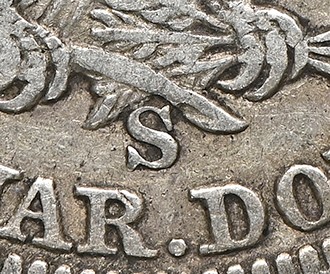 |
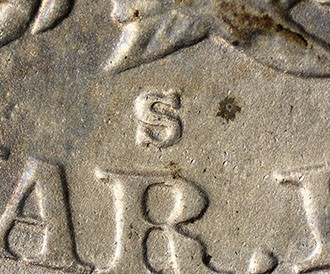 |
| This "S" mintmark appears much smaller on the counterfeit, a clear sign that this is not a genuine San Francisco Mint issue. Click images to enlarge. |
|
Also, the quarter's surface appears to have been altered by whizzing or polishing. The counterfeiter might have done this because they were having trouble matching the color or texture of the transplanted mintmark with the rest of the coin. On a genuine specimen, this sort of surface alteration would result in a Details grade. But don't let your guard down — even Details-graded 1861-S quarters can sell for hundreds of dollars more than equivalent examples from Philadelphia.
Counterfeiters will attempt to add a mintmark when doing so increases a piece's value. Collectors should study pricing information for the various mints of any coin they plan to buy. And if there is any doublt whether a coin is the real deal, remember that NGC backs its determinations of authenticity and grade with the NGC Guarantee.
Reproduced with permission from the February 2023 edition of The Numismatist, an official publication of the American Numismatic Association.
Did you know? NGC has created a comprehensive Counterfeit Detection resource to help collectors and dealers identify counterfeit and altered coins. Visit NGCcoin.com/counterfeit.
Stay Informed
Want news like this delivered to your inbox once a month? Subscribe to the free NGC eNewsletter today!
